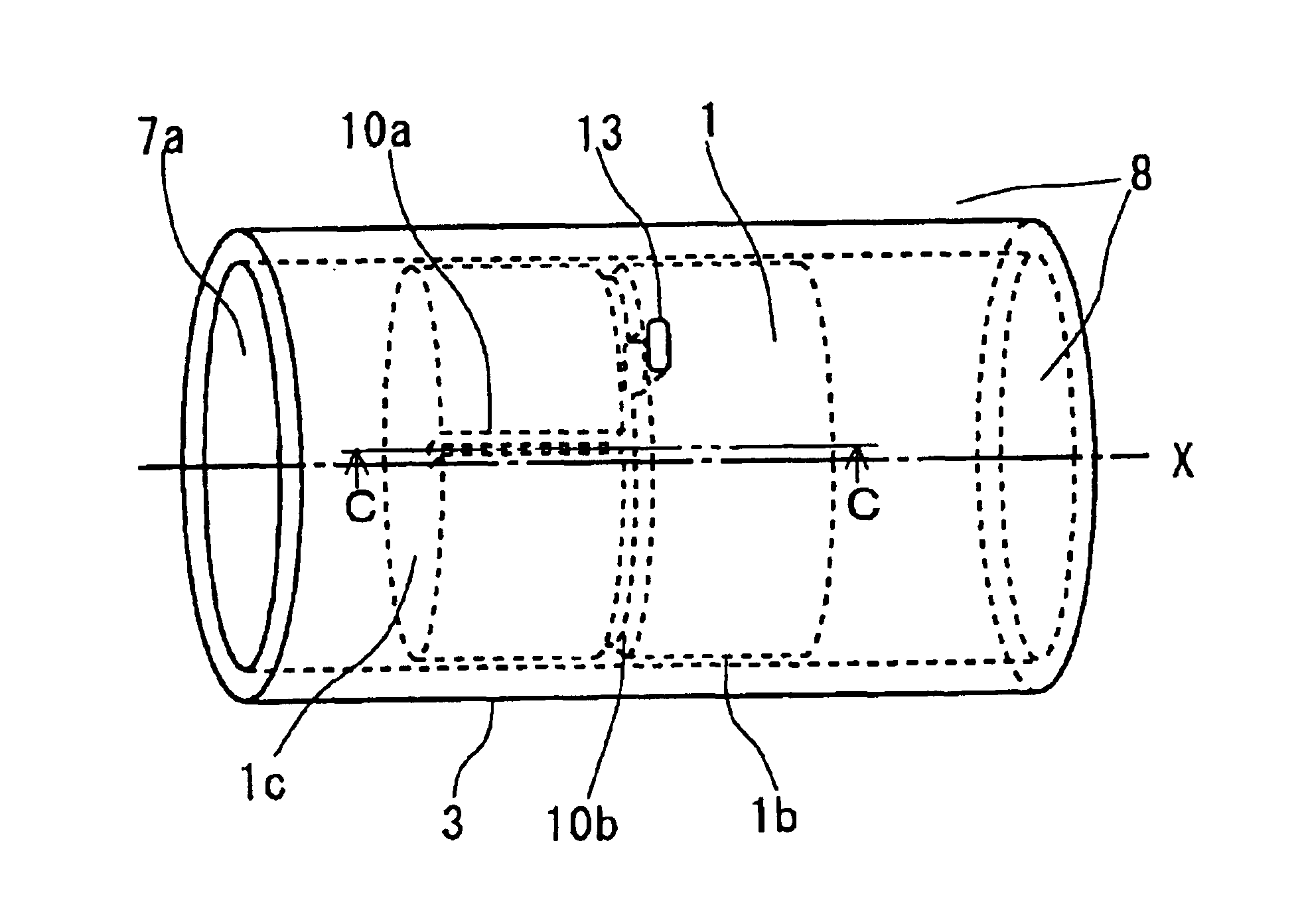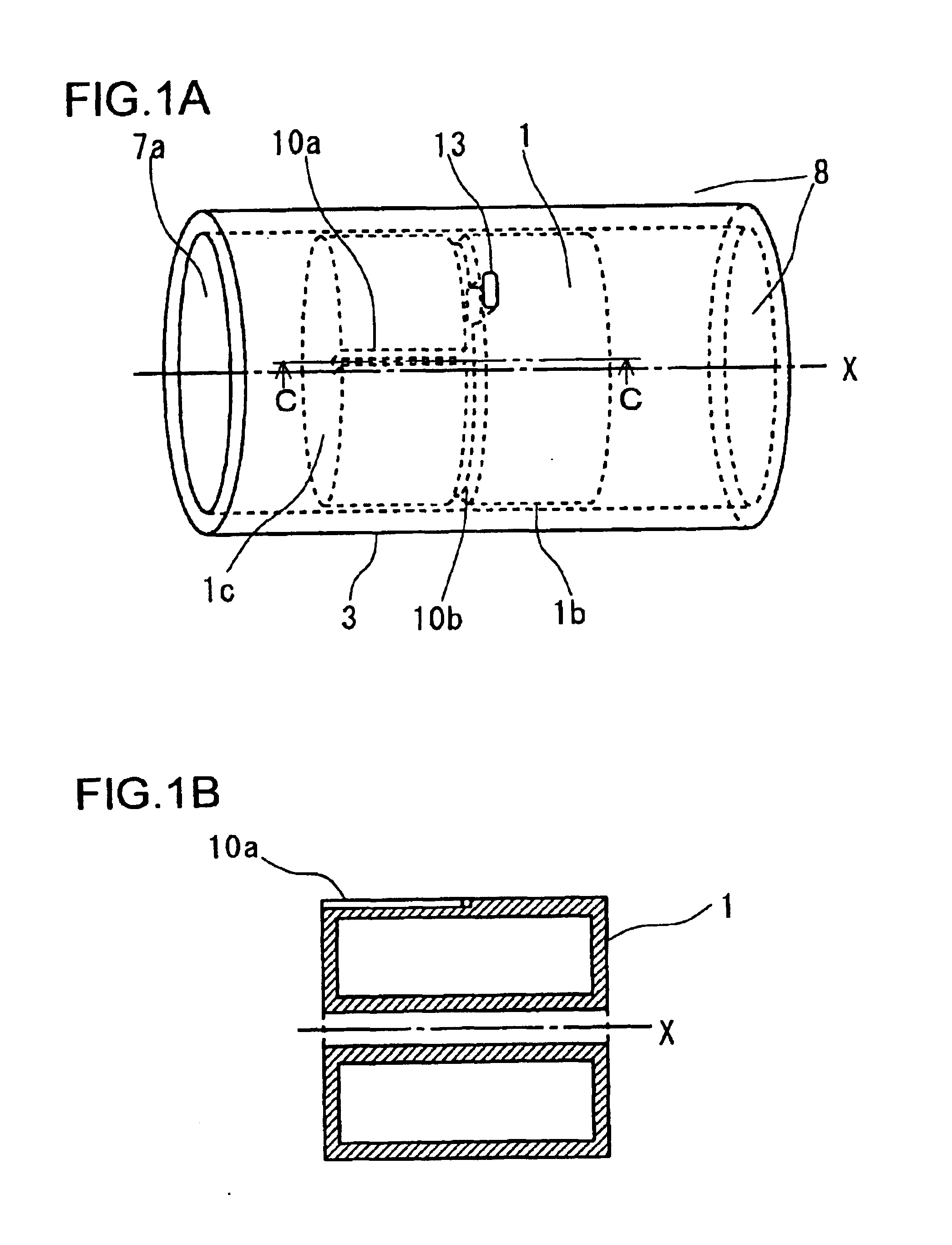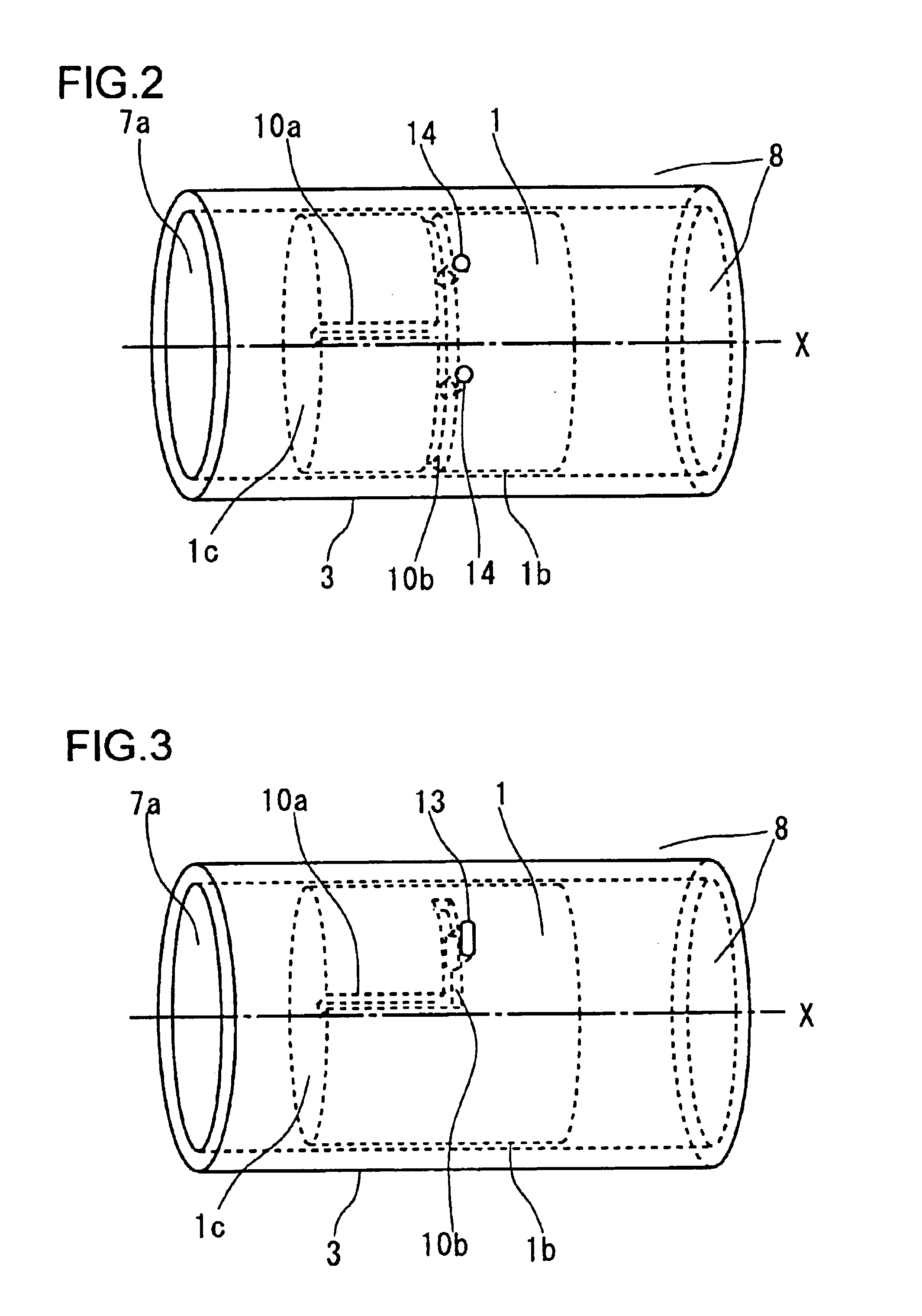Stirling engine
- Summary
- Abstract
- Description
- Claims
- Application Information
AI Technical Summary
Benefits of technology
Problems solved by technology
Method used
Image
Examples
first embodiment
FIG. 1A is a perspective view of the piston and the cylinder of the invention. Initially, the piston 1 is in the center position of its reciprocating movement where it is designed that equilibrium of pressure is achieved between the first space 7a and the second space 8. In the piston slide surface 1b, a first groove 10a is formed so as to run from the piston end surface 1c facing the first space 7a in the direction X of the reciprocating movement, and a second groove 10b is formed all around the periphery of the piston 1 so as to cross the first groove 10a. Moreover, in the cylinder 3, a hole 13 is formed so as to penetrate from the second groove 10b to the second space 8. Thus, during the reciprocating movement of the piston 1, only the moment that the second groove 10b and the hole 13 communicate with each other, the first space 7a and the second space 8 communicate with each other so that equilibrium of pressure is achieved between the first space 7a and the second space 8. Sinc...
second embodiment
FIG. 2 is a perspective view of the piston and the cylinder of the invention. The piston 1 is in the center position of its reciprocating movement as initially set. In the piston slide surface 1b, a first groove 10a is formed so as to run from the piston end surface 1c facing the first space 7a in the direction X of the reciprocating movement, and a second groove 10b is formed all around the periphery of the piston 1 so as to cross the first groove 10a. Moreover, in the cylinder 3, a plurality of (in FIG. 2, two) holes 14 are formed so as to penetrate from the second groove 10b to the second space 8. Since the second groove 10b is formed all around the periphery of the piston 1, even if the piston 1 rotates about its axis while moving, the second groove 10b can communicate with the hole 14.
Here, where a plurality of holes 14 are formed, by making the total of the diametrical cross-sectional areas of the holes 14 equal to the cross-sectional area of the single hole 14 in a case where...
third embodiment
FIG. 3 is a perspective view of the piston and the cylinder of the invention. The piston 1 is in the center position of its reciprocating movement as set initially, and is provided with a means (for example the piston support spring 5 shown in FIG. 10) for restricting the rotation of the piston 1 about its axis. In the piston slide surface 1b, a first groove 10a is formed so as to run from the piston end surface 1c facing the first space 7a in the direction X of the reciprocating movement, and a second groove 10b is formed in the periphery of the piston 1 so as to extend from one point on the first groove perpendicularly to the first groove (in FIG. 3, L-shaped). The second groove 10b is formed only where the hole 13 and the second groove 10b communicate with each other through the shortest path, and the opening of the hole 13 is formed in the shape of an elongate circle. The opening of the hole 13 may formed in any other shape as long as it helps shorten the time for which the seco...
PUM
 Login to View More
Login to View More Abstract
Description
Claims
Application Information
 Login to View More
Login to View More - R&D
- Intellectual Property
- Life Sciences
- Materials
- Tech Scout
- Unparalleled Data Quality
- Higher Quality Content
- 60% Fewer Hallucinations
Browse by: Latest US Patents, China's latest patents, Technical Efficacy Thesaurus, Application Domain, Technology Topic, Popular Technical Reports.
© 2025 PatSnap. All rights reserved.Legal|Privacy policy|Modern Slavery Act Transparency Statement|Sitemap|About US| Contact US: help@patsnap.com



